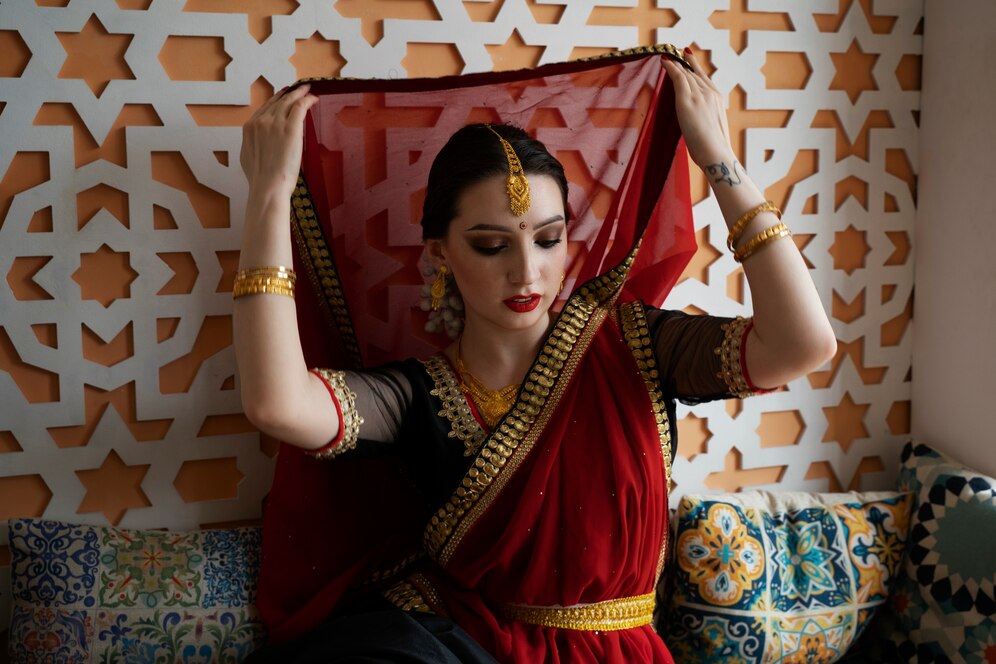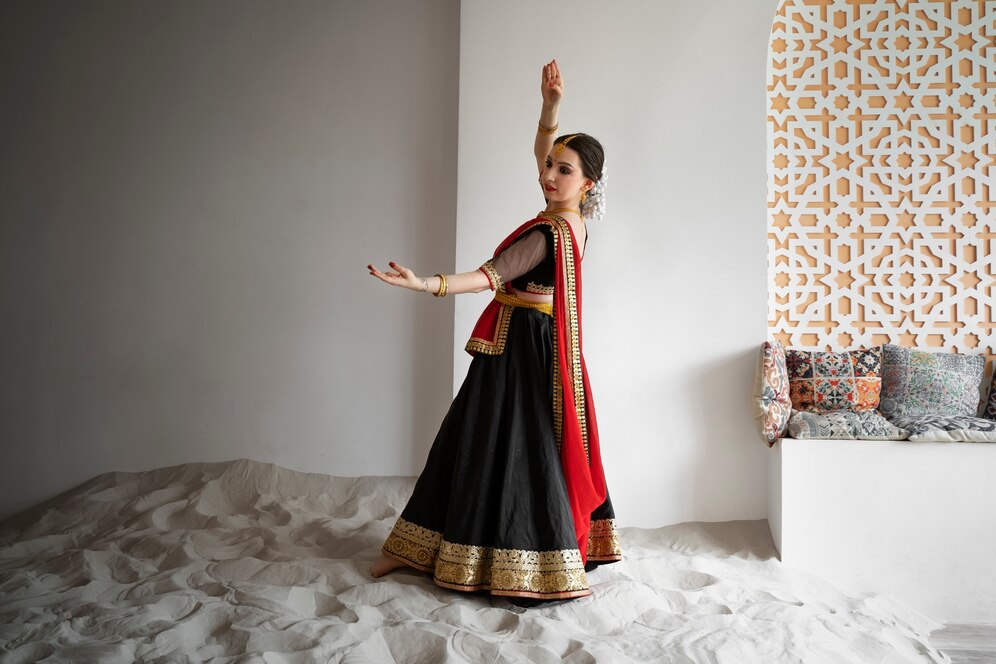
Kanjivaram silk sarees, renowned for their rich texture, vibrant colors, and intricate designs. These are a symbol of South Indian tradition and culture. Originating from the town of Kanchipuram in Tamil Nadu, these sarees are handwoven masterpieces that have captivated the hearts of saree lovers across the globe. However, with the rise in demand for Kanjivaram sarees, there has also been an increase in imitations and counterfeit products. Hence, it is crucial to know how to identify a pure Kanjivaram silk saree to ensure you are investing in an authentic piece of art.
1. Weave and Texture
The first step in identifying a pure Kanjivaram silk saree is to closely examine the weave and texture. Kanjivaram sarees are known for their tight weave and slightly heavy texture due to the use of high-quality silk threads. When you touch the saree, it should feel smooth and have a slight sheen. The texture should be consistent throughout the saree, with no loose threads or unevenness.
One of the distinct features of a pure Kanjivaram silk saree is the use of three silk threads twisted together for the body of the saree. The pallu and the border are often woven separately. And then attached to the saree with an intricate zigzag pattern known as “korvai.” This technique adds to the weight and strength of the saree, making it durable and long-lasting.
2. Zari Work
Zari, the metallic thread used in the borders and motifs of Kanjivaram sarees, is another crucial aspect to inspect. Pure Kanjivaram sarees use real zari, which is made from silver threads coated with gold. To check the authenticity of the zari, you can perform a simple test by scratching the zari lightly with a pin. If the zari is pure, it will reveal a reddish silk thread underneath the gold coating. Fake zari, on the other hand, will expose a white or polyester thread.
Additionally, the color of the zari in a pure Kanjivaram saree will have a subtle, antique gold or silver hue. Rather than a shiny or glittery finish, which is typical of imitation zari. The motifs created with zari work are usually inspired by temple architecture, peacocks, flowers. And other elements of South Indian culture, adding to the saree’s regal appearance.
3. Weight of the Saree
A pure Kanjivaram silk saree is generally heavier than other types of silk sarees due to the use of high-quality silk and real zari. The weight of the saree can vary depending on the complexity of the design and the amount of zari used. If the saree feels too light, it could be a sign that it is not made from pure silk or that it contains synthetic materials. However, some modern Kanjivaram sarees are made lighter for ease of wear. So it’s essential to consider other factors alongside weight.
4. Color and Shine
The colors of a pure Kanjivaram silk saree are often rich, vibrant, and have a natural luster. Traditional colors like red, green, and gold are common, but modern versions also come in a wide range of hues. The shine of the saree should be elegant and not overly glossy, which is a sign of synthetic materials. The natural sheen of a Kanjivaram silk saree is a result of the high-quality silk used, which reflects light beautifully without appearing garish.
5. The Burn Test
One of the most reliable methods to determine if a saree is made from pure silk is the burn test. However, this test should be done with caution and is usually performed on a small, inconspicuous part of the saree or on an extra thread provided by the seller. When you burn a small piece of silk, it should smell like burning hair, as both silk and hair are made of proteins. The ash residue should be black and powdery. If the material smells like burning plastic and leaves behind a hard residue, it is likely made from synthetic fibers.
6. Price Point
The price of a pure Kanjivaram silk saree is usually on the higher side due to the craftsmanship, quality of materials, and time required to create one. If a saree is being offered at a significantly lower price than expected, it could be a red flag. While it’s possible to find Kanjivaram sarees at different price points, extremely cheap prices may indicate the use of inferior materials or synthetic fibers.
7. Certification and Labeling
Many genuine Kanjivaram silk sarees come with a silk mark label or a certification from the Silk Mark Organisation of India. This mark is an assurance of the quality and authenticity of the silk used in the saree. Always look for this label when purchasing a Kanjivaram saree. Additionally, some sellers provide a certificate of authenticity that includes details about the type of silk, the percentage of zari used, and the traditional weaving techniques employed.
8. Artisanship and Detailing
Kanjivaram silk sarees are handwoven by skilled artisans, and each saree takes several days or even weeks to complete, depending on the intricacy of the design. The detailing on a pure Kanjivaram saree is exquisite, with well-defined motifs, consistent patterns, and perfect symmetry. The borders are often wide and feature intricate designs, which are a hallmark of the Kanjivaram style. The pallu, or the decorative end piece of the saree, is usually elaborate and features traditional motifs that reflect the rich heritage of Kanchipuram.
9. Saree Edge Finishing
In a pure Kanjivaram silk saree, the finishing of the edges, especially at the end of the pallu, is smooth and neat. The threads are carefully tucked in, and there should be no loose ends or frayed edges. The care and precision in finishing reflect the quality of craftsmanship involved in creating the saree.
10. Reputation of the Seller
Purchasing a Kanjivaram silk saree from a reputable and trusted seller or store can also help ensure that you are buying an authentic piece. Established stores often have a legacy of selling genuine Kanjivaram sarees and provide guarantees of authenticity. It’s always advisable to research the seller, read reviews, and ask for recommendations from those who have previously bought Kanjivaram sarees.
11. Checking the Reverse Side
Another way to identify a pure Kanjivaram silk saree is by checking the reverse side of the saree. In a genuine Kanjivaram, the reverse side will have the same neatness as the front, with no loose threads or uneven weaving. The motifs will be clearly visible, and the quality of the zari work will be consistent on both sides.
12. Durability and Longevity
One of the defining characteristics of a pure Kanjivaram silk saree is its durability. These sarees are known to last for generations if cared for properly. The high-quality silk and real zari used in Kanjivaram sarees contribute to their longevity. Unlike synthetic sarees, pure Kanjivaram sarees do not lose their sheen or texture over time, making them a valuable heirloom.
Conclusion
Understanding how to identify a pure Kanjivaram silk saree is essential for anyone looking to invest in this timeless piece of Indian heritage. By paying close attention to the weave, texture, zari work, and other key features. And you can ensure that you are purchasing an authentic Kanjivaram saree. Remember, a genuine Kanjivaram silk saree is not just a piece of clothing; it is a work of art that represents the rich culture and tradition of South India. Whether you are buying a Kanjivaram saree for a special occasion or as a treasured keepsake, knowing how to identify its authenticity will help you appreciate its true value.

